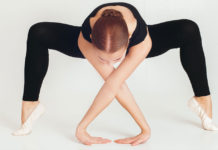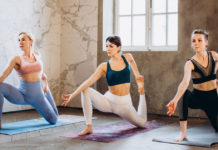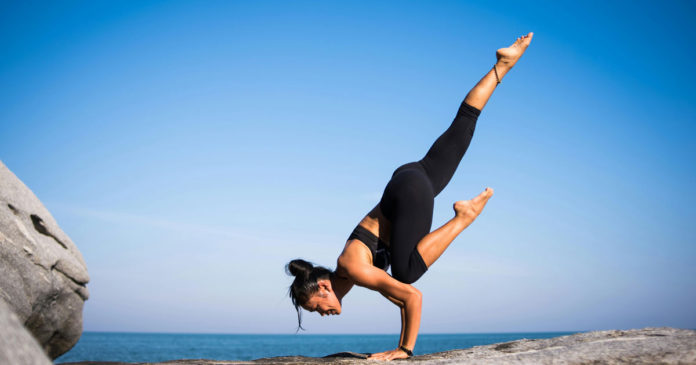A basic part of yoga practice is yoga alignment. It means the right body yoga alignment in different yoga positions or asanas, guaranteeing that each posture is performed with accuracy and mindfulness. The importance of perfect yoga posture cannot be emphasized, as it plays a critical role in optimizing the benefits of yoga practice while limiting the hazards.
The concept of yoga alignment encompasses a broader scope than mere physical alignment. It is a comprehensive technique that involves harmonizing the body, respiration, and mind. Yoga practitioners may enhance their stability, equilibrium, flexibility, strength, and general well-being by maintaining appropriate yoga alignment in postures.
There is a greater likelihood of injury or stress on certain joints and muscles if yoga poses are not properly aligned. Improper yoga alignment may also result in ineffective practice in which the intended advantages of a posture are not completely achieved. Incorrect yoga alignment may also cause imbalances inside the body, impeding growth on both bodily and energy levels.
Correct yoga alignment requires a mix of knowledge, understanding, and intentional involvement with one’s own physical being. It entails paying attention to small signs from the body throughout a position, such as feelings or pain, and making required changes to achieve ideal yoga alignment.
In this part on recognizing the necessity of perfect yoga position, we will look at many components of appropriately aligning the body in various yoga postures. We will discuss why it is important for practitioners of all levels – from novices to seasoned yogis – as well as how it may improve their practice on various levels. So, let us go further into this critical aspect of yoga practice: appropriate yoga alignment.
The Benefits of Practicing Correct Yoga Alignment
Yoga alignment has several advantages that extend beyond physical health. Individuals may benefit from enhanced flexibility, injury avoidance, improved posture, and improved strength and stability by concentrating on optimal alignment.
Improved flexibility is one of the primary advantages of practicing yoga alignment. Yoga positions involve muscular stretching and lengthening, which aids in general flexibility. This may result in increased range of motion during regular activities and decreased muscular stiffness.
In addition to increasing adaptability, practicing yoga alignment helps to avoid injuries. When the body is correctly aligned during yoga postures, the danger of strain or overuse on certain muscles or joints is reduced. This provides a safer approach and reduces the likelihood of pain or harm.
Yoga alignment also adds to improved posture. Many individuals spend lengthy periods of time sitting at computers or bent over electronic gadgets, which may result in bad posture patterns. Yoga postures that emphasize spine alignment and chest opening assist to mitigate these adverse consequences and develop a more erect physique.
In addition, practicing yoga alignment increases strength and stability. The involvement of numerous muscle groups during various postures aids in the development of overall body strength. This improves not just endurance but also general stability and balance.
Finally, practicing yoga alignment has several advantages such as enhanced flexibility, injury avoidance, improved posture, and increased stability and power. Individuals may optimize these benefits for their physical health and general quality of life by giving attention to optimal alignment throughout practice.
Common Misalignments in Yoga Poses and How to Correct Them
Yoga is a discipline that improves physical and emotional well-being, but precise alignment in yoga postures is critical to minimize possible injuries and optimize the benefits. In this part, we will look at some typical misalignments in yoga postures and how to fix them.
Improper spinal alignment is one of the most prevalent faults in yoga poses. This may happen when the spine becomes rounded or unduly arched, causing back or neck discomfort. Focus on extending your spine by activating the muscles in your core and pulling the blades of your shoulders down and back to remedy this.
Collapsing or lowering into joints like your knees or wrists is another common misalignment. This may place undue strain on these regions, increasing the risk of damage. To solve this problem, make sure your weight is distributed properly throughout the structure and that you activate the supporting muscles surrounding your joints for stability.
Warrior I and Triangle pose are two other standing positions that might be impacted by misaligned hips. Misaligned hips may cause an unequal weight distribution or a restricted range of motion. In order to correct this, you should position your hips so that they are perpendicular to the top edge of the mat and consciously contract the muscles that surround them in order to achieve stability.
It’s important to remember that every person’s physique is different, therefore various adaptations may be required based on individual mobility and constraints. Seeking the advice of a certified yoga teacher may help you detect particular discrepancies in your routine and provide individualized modifications.
By resolving these frequent discrepancies in yoga poses with appropriate awareness and corrections, you may improve your practice while reducing the hazards associated with poor alignment.
Mountain Pose (Tadasana)
Mountain Pose, also referred to as Tadasana, is a fundamental yoga position that serves as the foundation for many others. It may seem straightforward at first appearance, but appropriate alignment must be understood and practiced in order to truly benefit from this posture.
Misaligning the feet is a typical error in Mountain Pose. Some practitioners let their feet to roll inward or outwards, which may throw the pose’s balance and stability off. To rectify this, ensure that your feet are aligned and firmly grounded, with your weight evenly distributed over all four sides of each foot.
Rounding or hunching the shoulders is another typical misalignment in Tadasana. This may induce upper back and neck tension. By retracting and retracing your shoulder blades, you can achieve the desired effect of expanding your rib cage and elongating your vertebrae. Maintain a comfortable posture with your shoulders away from the ears.
In Mountain Pose, it’s also crucial to be conscious of any excess arching or curving of the lower back. Finding a neutral posture for your pelvis might assist in correctly aligning your spine. Draw your navel softly toward your spine without trying to use your core muscles somewhat.
Finally, maintain a straight path from the top of your head all the way to your tailbone. Consider a thread linked to the highest point of your head slowly pulling you higher. This will assist you in keeping good alignment throughout the position.
Improving your posture, strengthening your core muscles, and increasing your body awareness in and out of the yoga mat are all possible outcomes of focusing on and resolving these typical errors in Mountain Pose (Tadasana).
Downward-Facing Dog (Adho Mukha Svanasana)
One of the foundational yoga postures, Downward-Facing Dog (Adho Mukha Svanasana) provides a multitude of mental and physical benefits. Nevertheless, maintaining proper alignment is crucial in order to safeguard against injury and optimize the advantages of this yoga pose, similar to all others.
Shoulders rounded and back hunched is a frequent error when performing Downward-Facing Dog. This misalignment may cause neck and shoulder discomfort. To rectify this mistake, widen your shoulder blades and engage your core muscles to extend your spine.
Another typical error is sinking into one’s wrists and applying too much pressure on them. To prevent this, equally distribute your weight across your hands by pushing firmly onto every one of the four corners of the palms. Additionally, for added stability, consider a little broader hand placement.
Hip misalignment is another problem that may emerge with Downward-Facing Dog. Certain practitioners have the tendency to raise their sit bones excessively high or release them too low. To get the best balance, lift your sit bones up toward the sky and keep your knees slightly bent. This promotes spine length and minimizes lower back discomfort.
Finally, in this position, it’s critical to focus on good leg and foot alignment. Maintain a modest micro-bend in your knees to avoid locking them out. Firmly press down with the balls and heels of your feet as well as the rest of your foot.
By being aware of these typical errors and making the required modifications, you may improve your Downward-Facing Dog practice while eliminating any hazards or discomforts connected with poor alignment. It is advisable to bear in mind that attaining optimal results can be further enhanced through professional guidance during practice or by enrolling in yoga classes.
Warrior II (Virabhadrasana II)
A fundamental yoga position, Warrior II (Virabhadrasana II) fortifies the lower limbs, facilitates hip opening, and enhances overall stability. Nevertheless, maintaining proper alignment is crucial in order to prevent potential injuries and optimize the advantages of this yoga pose, similar to all others.
Allowing the front knee to fold inward is a typical misalignment in Warrior II. This might put pressure on the leg’s knee joint and jeopardize stability. Make sure your front knee is squarely over your ankle and pointed toward your second toe to rectify this issue. Engage your inner thigh muscles to help with alignment.
Another common error in Warrior II is forward hunching or rounding of the shoulders. This might cause neck or upper back strain. Instead, elevate your chest and bring the shoulder blades downward and back. Consider a cord tugging you upwards from the top of your head, lengthening your spine.
Misalignments in hip posture may also arise during Warrior II. Others who practice might let their pelvis face forward rather than open to the side. To rectify this mistake, aggressively twist both of your hips towards the extended edge of the floor while keeping your pelvis firm.
For best stability and balance in Warrior II, ensure equal weight redistribution between both feet. For stability, ground downward through all four sides of each of your feet while activating your leg muscles.
By being aware of these typical errors and making the required modifications, you may improve your practice in Warrior II by keeping perfect alignment. Regular practice with proper posture will not only help you avoid injuries, but will also help you comprehend this powerful yoga position.
Triangle Pose (Trikonasana)
Triangle Pose, also referred to as Trikonasana, represents a fundamental yoga position that has several health and mental advantages. However, like with any yoga practice, good alignment is essential to minimize any injuries and optimize the advantages of the pose.
A misalignment of the hips is a typical error in Triangle Pose. It is critical to have both hips aligned forward rather than one hip pulled back. This imbalance could put pressure on one’s lower back and jeopardize the pose’s integrity. You may rectify this imbalance and enjoy a more stable Triangle Pose by intentionally activating the core musculature and actively moving the hip forward.
Another typical error is rounding or compressing the upper body. It’s critical to keep your spine stretched and your chest open in Triangle Pose. Avoid hunching or falling forward since it will impede your capacity to properly stretch through the sides of your body and will interfere with your breathing. Instead, concentrate on stretching your body on both sides while maintaining your shoulders relaxed and away from your ears.
Furthermore, in Triangle Pose, avoid expanding or shutting out your front knee. This might put undue pressure on the knee joints. Instead, keep your front knee micro-bend while concentrating on grounding throughout all four sides of your feet for stability.
Triangle Pose (Trikonasana) alignment faults may be corrected by practicing in front of a mirror or seeking instruction from an experienced yoga instructor who can make tailored adjustments and modifications according to your body’s requirements.
By recognizing and correcting these frequent errors using appropriate alignment methods, you may improve your practice and get additional advantages in Triangle Pose (Trikonasana) whilst reducing any possible hazards or discomforts related to poor form.
Tree Pose (Vrksasana)
The Tree Pose, which is also called Vrksasana, is one of the most basic yoga poses. It can help you become more balanced, stable, and focused. However, in order to get the full advantages of this position, precise alignment must be maintained.
Inadequate alignment during Tree Pose can result in suboptimal performance and even physical harm. A prevalent misalignment occurs when an excessive amount of weight is supported by the standing limb, leading to an elevated hip and subsequent bodily imbalance. To prevent this, equally distribute your weight over both feet and activate your abdominal muscles for stability.
Allowing the elevated foot to settle on the knee joint rather than above or below it is another misalignment. This might put pressure on the knee and jeopardize its integrity. Instead, rest your foot on the position leg in or out of the knee to establish a solid connection.
Also, keep your spinal alignment in mind when in Tree Pose. Excessive forward or backward tilting might throw your balance off and stress your back. Maintain a tall and straight spine while softly activating the muscles in your abdomen for stability.
You can engage in Tree Pose safely and successfully while enjoying its various both mental and physical benefits by paying awareness to these typical misalignments and making appropriate changes.
Tips and Techniques for Achieving Proper Yoga Alignment
Proper yoga alignment is critical in yoga practice since it helps to avoid injuries and enhance the advantages of each posture. In this part, we’ll look at several helpful hints and practices for establishing perfect yoga alignment.
Body awareness is an important part of yoga alignment. You may better position yourself in each posture by acquiring a thorough awareness of your physical structure and its limits. This is paying attention to the way you feel, being aware of any pain or suffering, and making changes as needed.
Another important factor in establishing good yoga alignment is using your core muscles. During yoga postures, your core gives stability and support to your whole body. You may build a firm foundation for greater balance and alignment by actively exercising these muscles.
Using accessories for support may also help you maintain appropriate yoga alignment. Props like blocks, belts, or bolsters may help you get into the right posture while avoiding muscular tension or overstretching. They provide extra assistance and assist in modifying postures depending on individual requirements.
Keep in mind that perfect yoga alignment requires time and practice. It’s essential to be gentle with oneself and avoid forcing positions that are beyond your present skills. You will steadily develop your yoga alignment abilities with constant work and dedication to precision, resulting in a more enjoyable practice with greater advantages for both your mental state and body.
The Role of a Qualified Instructor in Assisting with Yoga Alignment
A certified yoga teacher is essential for aiding individuals with yoga alignment. Their instruction ensures that students attain perfect alignment in each posture, boosting the advantages of their practice while reducing the risk of injury.
A trained instructor’s primary responsibility is to give tailored modifications and corrections. They are qualified to evaluate each student’s unique physical shape, restrictions, and talents. Instructors may give customized tweaks and alignments geared to individual requirements by attentively studying their pupils.
Instructors may utilize hands-on corrections alongside verbal reminders to physically help pupils into optimal posture. This immediate touch enables students to have a better knowledge of optimal alignment and feel the posture more effectively.
A trained teacher may also provide variations or adjustments for particular body types or circumstances. They have the skills and ability to modify postures for pupils who have physical restrictions or injuries. This guarantees every person in the group can take part in a safe and comfortable manner.
Overall, having a trained yoga teacher on hand may help you achieve optimal posture throughout practice. Their individualized adjustments, corrections, and experience substantially help to enhance one’s yoga journey by fostering safety, growth, and the maximum benefits from each posture.
Conclusion: Embracing Proper Alignment for a Safe and Fulfilling Yoga Practice
In summary, adopting appropriate yoga alignment is crucial for ensuring the safety and satisfaction of one’s yoga practice. Yoga practitioners may prevent injuries and enhance the advantages of their practice by recognizing the significance of posture and practicing with awareness.
Ensuring proper alignment entails sustaining the appropriate bodily positioning in every asana (pose). This keeps muscles engaged, joints protected, and energy flowing easily throughout the body. It also helps to protect weak regions including the spine, the knees, and shoulders.
Practitioners may increase their understanding of their personal bodies by concentrating on alignment. They learn to pay attention to their bodies’ cues and change appropriately. This not only prevents injuries but also fosters a stronger connection between the body, mind, and breath.
Furthermore, good alignment boosts the efficiency of each position. When the body is properly positioned, it allows for optimum muscular stretch and activation. This leads to increased flexibility, strength, balance, and general physical well-being.
In addition to the physical advantages, good alignment during yoga practice helps to maintain mental and emotional equilibrium. When practitioners position their bodies perfectly in each posture, they build a feeling of presence and attention that extends beyond the mat.
Both beginners and seasoned yogis should stress good alignment in their daily practice. Beginners should seek instruction from certified teachers who can teach them proper skills right away. Experienced practitioners should evaluate their alignment on a regular basis to ensure they are still in excellent condition.
To summarize, adopting appropriate yoga alignment is more than simply accomplishing stunning postures; it is about recognizing your body’s requirements and establishing a safe environment for development in the context of your yoga practice. You may have a more rewarding trip on your mat whilst reaping its various mental, physical, and emotional advantages by including conscious attention to alignment in your daily practice routine.









